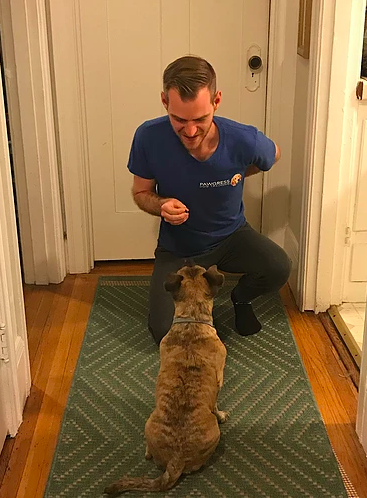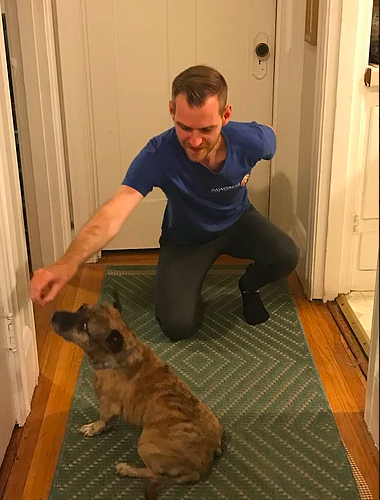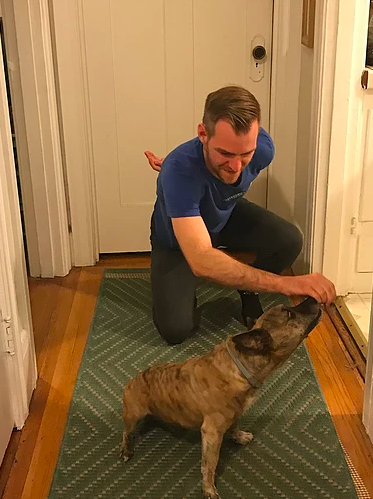How to Teach Dogs New Cues
- Rusty Barnes
- Jun 30, 2019
- 4 min read
So you understand how dogs learn. You have a proven and trusted training philosophy on which you can rely. You recognize how our relationship with dogs can affect the way they behave. And you know how to proof behaviors.
But how do you actually teach a new cue? What are the physical mechanics that manufacture learning? The answer may surprise you.
Remember that dog training is easy as A + B = C
or
Antecedent (stimulus) + Behavior = Consequence (reward vs. punishment)
Almost all behaviors are taught using one of three methods: capturing, luring, and shaping. These methods are used in combination with markers, or indications to the dog that it has done something right (i.e. “Yes,” “Good,” the sound of a clicker) or wrong (i.e. “Eh Eh” or “Oops,”).
Capturing
The easiest way to teach a new cue, capturing is when a dog voluntarily engages in a behavior and we take a snapshot of this by marking it with a “Yes.” For example, if a dog paws at you for attention when you reach to pet it, the word “Yes” followed by a reward positively reinforces to the dog that you would like for this behavior to continue. When you can predict that the dog will offer its paw every time you reach to pet it, you can put the action on a cue word like “shake” by saying or gesturing for this right before you know the dog will offer its paw.
Luring
More common than capturing, lures are something dogs will naturally follow that can be used to guide them into certain positions or behaviors. The most natural lure is food, but toys and other objects can work if the dog is strongly motivated by them. Lures are extremely effective training tools and simultaneously accomplish several things, including the:
1. ability to guide a dog into any position without the use of force or physical manipulation (i.e. pushing a dog’s butt to the ground to teach a “sit").
2.meaning of markers which indicate correct behaviors (i.e. “Yes,” “Good,” or the sound of a clicker).
3. meaning of No Reward Markers (i.e. “Eh Eh” or “Oops”) which indicate to the dog that it has made a mistake and motivates him or her to try again without causing stress.
Have you ever wondered how to teach your dog to spin on cue? Luring the dog in a circle with a piece of food is the most efficient way to achieve this. Once the dog completes a full 360 degree rotation, mark this with a “Yes” to let the dog know it was successful, and when the dog can spin reliably with the lure, the add the cue word “spin” immediately before beginning the lure motion.
Shaping
When a dog pieces a series of steps together into a behavior, this is referred to as shaping. This process can be completed in forward and reverse order, the latter of which is commonly termed “backchaining.”
Dogs will always take the fastest path to a reward. This works in our favor when shaping the steps that make up a complete behavior. Once you have practiced a particular sequence several times in a row, the dog will start to realize that it doesn’t need to wait on you to cue the middle steps anymore. Instead, it will predict what you want and go straight from step 1 to step 3, or if you are backchaining, from step 3 to step 1.
Capturing, luring and shaping provide three different force-free and reward-based options to teach a dog any new cue. They can be employed individually, but are often used in concert with one another.

Here is a simple at-home exercise to help you practice all three training techniques:
1. Put a treat in your closed hand. Do not let the dog see you do this.
2. Have the dog stand directly in front of you.
3. Silently extend your hand to the dog’s nose. When the nose “attaches” to your hand, mark this by saying “Yes” and opening your hand to deliver the treat as a reward. Repeat 10 times.
4. Now extend your hand to the dog’s nose, and when the nose attaches, raise your closed hand just above the dog’s nose and back over the head as if you were drawing an “L” in the air.
5. The dog’s head should follow your lure, which will guide it into a sitting position. The instant the dog's butt touches the ground, mark this by saying “Yes” and opening your hand to deliver the treat as a reward.
6. Repeat steps four and five 10 times without saying the word “sit.”
7. Practice steps four and five 10 more times. However, this time, say “sit” after the nose attaches to your hand and immediately before you begin luring.
8. Now ask the dog to “sit” without offering any lures. If the dog sits successfully, you can proceed to step 9. If a “sit” is unsuccessful,” go back to step 4.
9. Say "sit.” Once the dog sits, wait for it to look you in the eyes. The instant this happens, capture this behavior by marking it with a “Yes” and rewarding with a treat. Repeat 10 times.
10. Say “sit” and do nothing. The dog should sit and automatically focus by looking you in the eyes. If the dog sits but does not focus, go back to step 9. If the dog does not sit, return to step 4. If the dog sits and auto-focuses, congratulations on shaping the behavior!












Comments